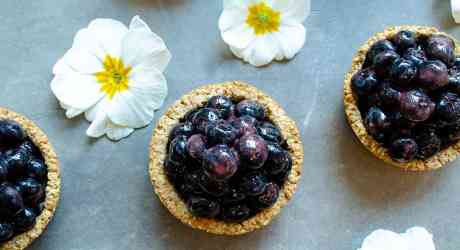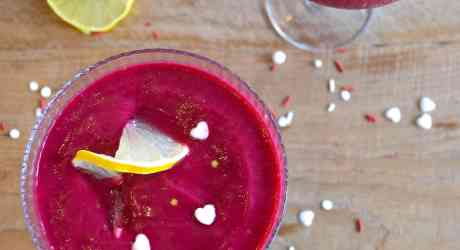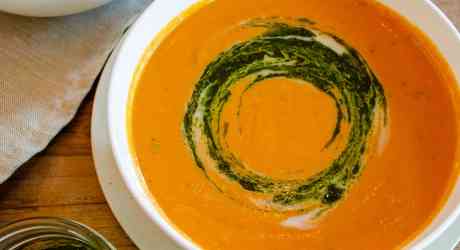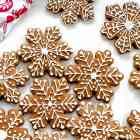Raw cacao eggs - 3 ways
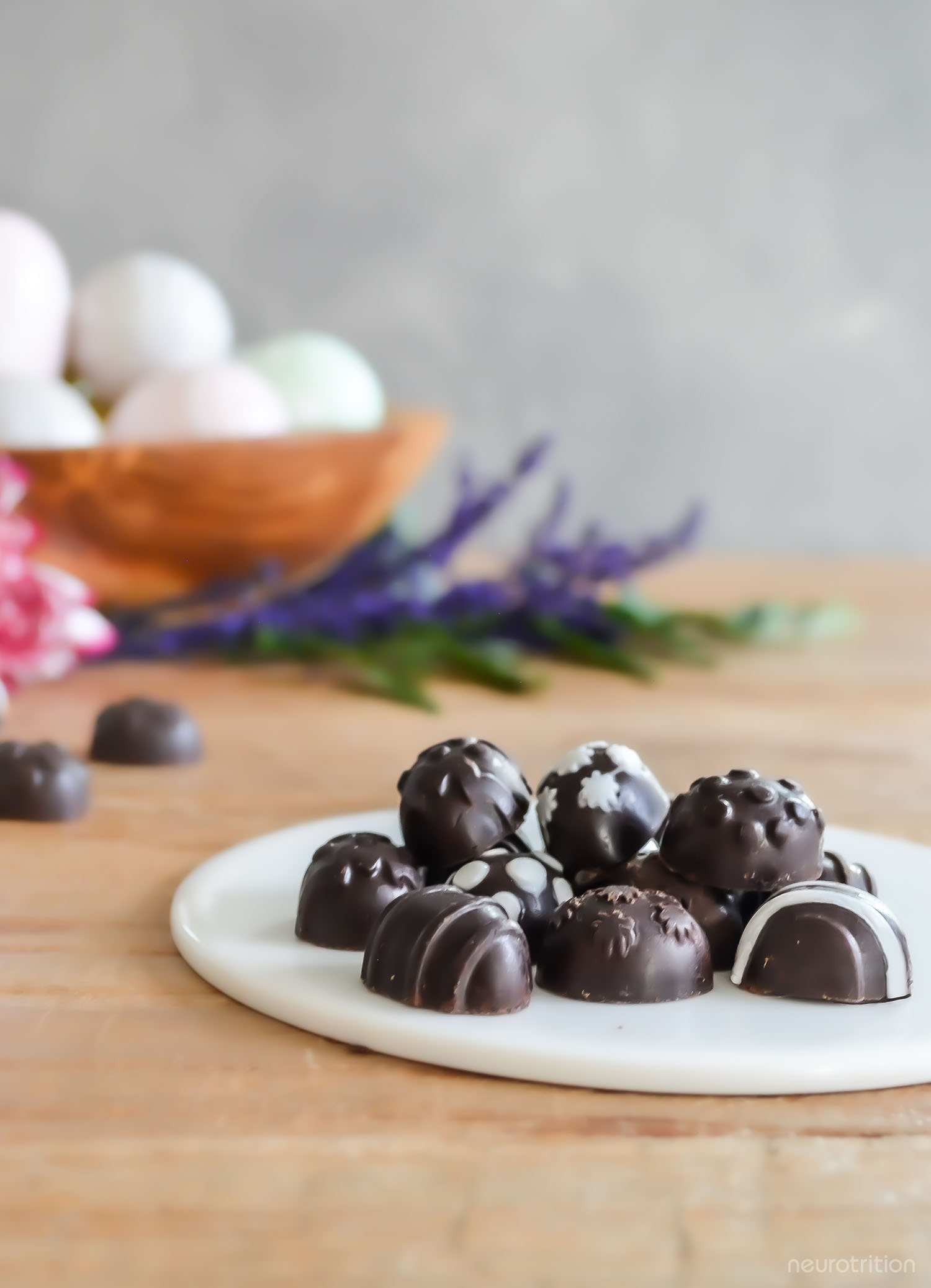
I am so eggcited (bad pun, please bear with me) about this recipe! Because we have elevated the Cadbury Creme Egg, which I’ve loved since I was a child, with some brain-loving ingredients!
The classic version, while delicious yes, contains sugar (first ingredient at that), glucose syrup AND invert sugar along with palm and shea fats, who-knows-what “flavourings” and artificial yellow food dye #6. Our version uses condensed milk (or condensed coconut milk if you want it fully plant-based) for the “egg white” and turmeric powder for the “yolk” instead. When we tasted how good these turned out, we went a step further and decided to create a Caramel Egg version too, using coconut cream and coconut sugar (this one’s 100% plant-based even without the swap). And it turned out eggcellent (sorry, I’ll stop with the puns now).
Craving just a basic good-for-you chocolate egg? We’ve got you covered! You can make the chocolate shell used for the cream or caramel eggs but fill the mold to the top for a solid chocolate egg that’s anything but basic with brain-loving ingredients like raw cacao butter, organic cacao paste, organic maple syrup and coconut milk powder.
Each batch makes 48 eggs, for an epic Easter egg hunt (wrap them in cute paper) or to have on-hand in your fridge or freezer for any occasion (or no occasion)!
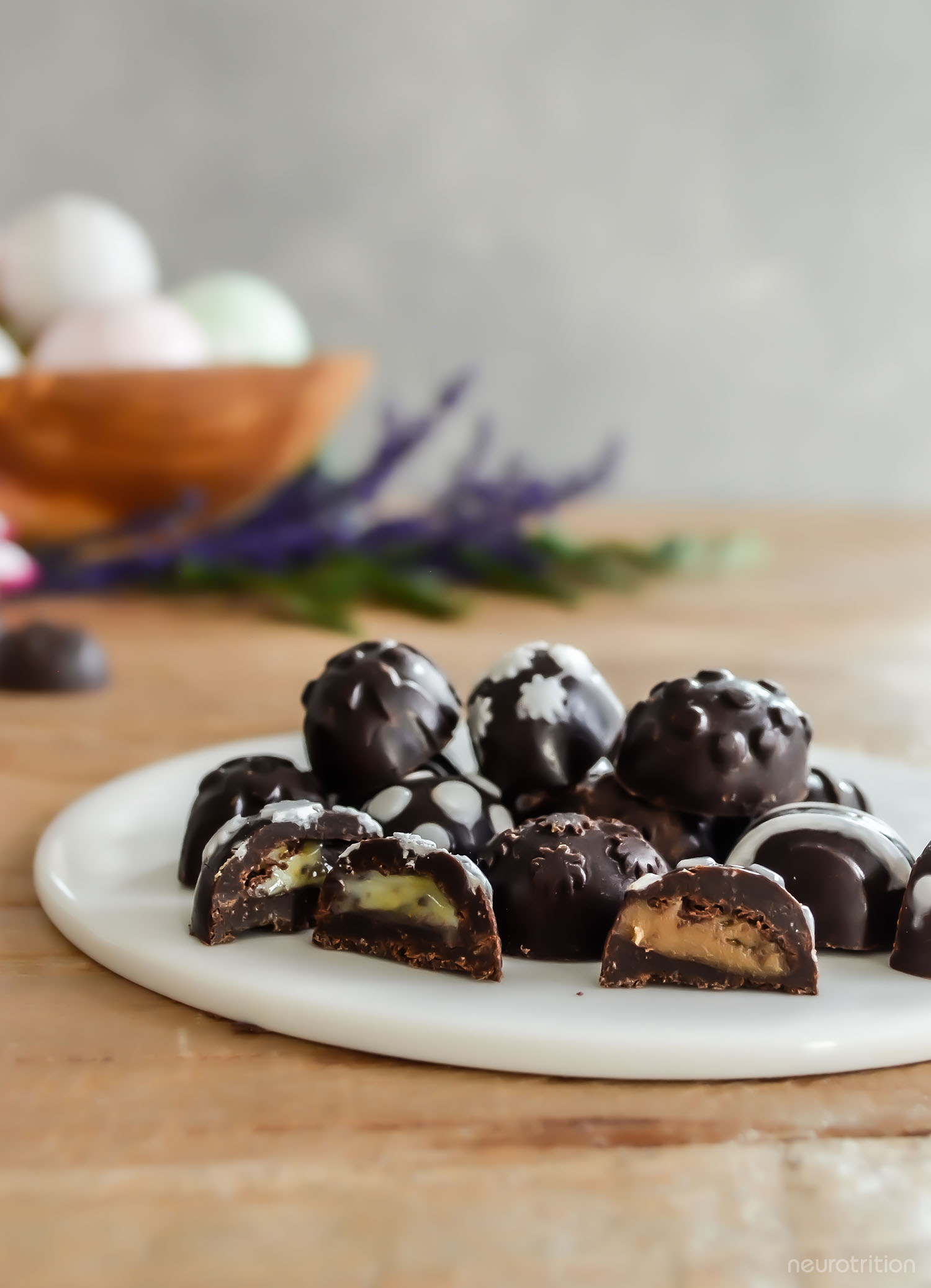
Chocolate:
- 1/2 cup raw organic cacao butter
- 1/4 cup organic cacao paste
- 1/4 cup raw organic cacao powder
- 2 Tbsp organic maple syrup
- 1/4 tsp organic vanilla extract
- 2 Tbsp organic coconut milk powder
Cream Filling (Optional):
- 1/4 cup canned condensed milk*
- 3 tsp powdered organic cane sugar
- 1/4 tsp turmeric powder**
Caramel Filling (Optional):
- 1/2 cup coconut cream
- 1/4 cup + 2 Tbsp coconut sugar
- To make chocolate, fill the bottom of a double boiler with water, place on the stove and turn heat to medium. Combine cacao butter, cacao paste, cacao powder, maple syrup, vanilla, and coconut milk powder into the top of the double boiler*** and continue to stir to combine as mixture melts together - mix well.
- Once chocolate is fully combined, begin pouring it into your chocolate mold. If wanting to make plain chocolate eggs, fill each mold up, smooth out the top and skip to step 8. If adding a filling, make a chocolate “shell” by coating all sides of the mold and then tilting it side to side to allow the excess to run out. Place in the freezer for a few minutes to firm up.
- Remove from freezer and do a second coat of chocolate, once again coating the sides and allowing the extra to run out, making sure the shell is thicker, but there is still room for the filling. Place back in the freezer for a few minutes to firm up.
- Optional: To make the cream filling, combine condensed milk, and powdered sugar in a small bowl and mix well until smooth - this will be the “egg white”. Add 1 tsp of this mixture and the turmeric to a second small bowl and mix to combine - this will be the “egg yolk”. Set aside until chocolate is ready.
- Optional: To make caramel filling, combine coconut cream and coconut sugar in a small pot and heat over medium heat while stirring frequently. You want to see small bubbles, but this can burn easily so stir frequently. After about 15 minutes, the caramel should have thickened slightly and is ready to be poured in a jar and put in the fridge to continue to firm up.
- For cream eggs: When shells are ready for filling, add a drop of the turmeric “egg yolk” mixture to the middle of the shell, and add the “egg white” mixture over top carefully, filling the shell about 3/4 full. Place in freezer to firm up for 5 minutes. Remove from freezer and fill the rest of the shell up with chocolate, smoothing out the top.
- For caramel eggs: When shells are ready for filling, add cooled caramel until the shell is about 3/4 full. Place in freezer for 5 min to firm up. Remove from freezer and fill the rest of the shell up with chocolate, smoothing out the top.
- Allow chocolate to harden at room temperature and remove each chocolate from mold.
If making either the caramel or cream eggs, this recipe works best when the filling is prepared before the chocolate is prepared. This prevents the chocolate you’re working with from cooling and hardening before the eggs are complete.
Store plain chocolate egg in airtight container in fridge for 1-2 weeks. Store cream egg chocolate in airtight container in the fridge for 3 days. Store caramel egg chocolate in airtight container in fridge for 5-7 days.
* You can swap the condensed milk for condensed coconut milk, it just may look a bit more yellow than the typical “egg white”.
** Turmeric is optional, mostly to add colour to the egg ‘yolk.’
*** If you don’t have a double boiler, you can use a heat proof bowl or frying pan, over a small pot. You want the bowl or pan to sit overtop of the pot, not inside the pot. At no point should water or steam come into contact with the melting chocolate.

Maple Syrup:
- A newly discovered compound found in maple syrup, quebecol, was found to be associated with a reduction in pro-inflammatory cytokines (chemical messengers that initiate the immune response and jack inflammation).
- Another naturally occurring compound from maple syrup extract might be able to reduce the amount of antibiotics necessary to combat infectious bacteria, which could in turn affect brain functioning.
Turmeric:
- Its active compound (the part that makes it work), curcumin, helps decrease inflammation and free radicals in the brain to improve memory and has potential to be a treatment for Alzheimer’s.
- It’s a natural antidepressant since it increases a protein called Brain-Derived Neurotrophic Factor (BDNF) which grows new neurons (brain cells) and allows them to talk to one another.
Coconut:
- Learn about coconut and its different components like cream, milk and oil here. And try our homemade coconut butter or coconut whipped cream!
- References
-
- Cardinal, S., Azelmat, J., Grenier, D., & Voyer, N. (2016). Anti-inflammatory properties of quebecol and its derivatives. Bioorganic & medicinal chemistry letters, 26, 440-444.
- Liu, D., Wang, Z., Gao, Z., Xie, K., Zhang, Q., Jiang, H., Pang, Q. (2014). Effects of curcumin on learning and memory deficits, BDNF, and ERK protein expression in rats exposed to chronic unpredictable stress. Behavioural Brain Research, 271, 116 - 121.
- Maisuria, V. B., Hosseinidoust, Z., & Tufenkji, N. (2015). Polyphenolic extract from maple syrup potentiates antibiotic susceptibility and reduces biofilm formation of pathogenic bacteria. Applied and environmental microbiology, 81, 3782-3792.
- Mishra, S., & Palanivelu, K. (2008). The effect of curcumin (turmeric) on Alzheimer's disease: An overview. Annals of Indian Academy of Neurology, 11(1), 13-19.
